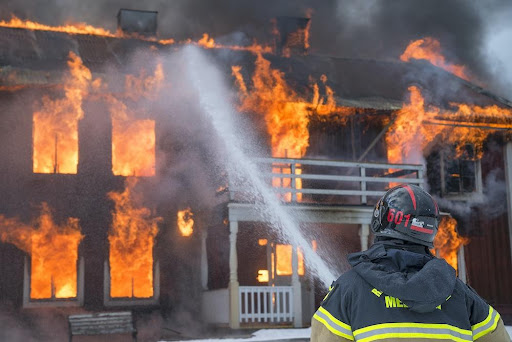High-risk jobs are not just a matter of occupational hazard; they carry with them a unique set of challenges and emotional tolls.
Understanding and coping with these challenges is essential for the well-being and safety of those working in such environments. This article delves into effective strategies and tips for managing the risks and stresses inherent in high-risk occupations.
Safety First: Prioritizing Well-Being in Hazardous Situations
The paramount importance in high-risk jobs is safety. It’s not just about following protocols but understanding the ‘why’ behind them. Every safety guideline and procedure is designed to protect you and your colleagues from harm. Prioritizing safety means being vigilant, aware, and proactive.
Regular training and drills play a crucial role in preparing for emergencies. Participating actively in these sessions and understanding the practical application of safety procedures can make a significant difference in real-life scenarios. It’s also vital to be equipped with the right safety gear and to ensure that it’s in good working condition.
Navigating the Risks of Working with Asbestos in Construction
Construction work, especially when it involves dealing with materials like asbestos, carries its own set of risks. Asbestos, once a popular building material, is now known to cause serious health issues, including mesothelioma, a type of lung cancer.
Workers in construction sites dealing with asbestos need to be extraordinarily cautious and well-informed about the hazards and necessary safety measures.
Employers are obligated to provide appropriate training and safety equipment to employees working with asbestos. But it’s equally important for workers to be proactive in learning about asbestos-related risks and following safety protocols diligently. Regular health check-ups and monitoring for symptoms related to asbestos exposure are crucial.
In cases where employers fail to provide adequate safety measures, it’s essential to know your rights. Legal recourse is an option, and firms like Simmons Hanly Conroy specialize in such cases. They can provide legal guidance and help hold negligent parties accountable.
Remember, your health and safety are paramount, and there are laws and resources available to protect you.
Understanding and Managing Stress in High-Risk Environments
Working in high-risk jobs often involves facing unpredictable and potentially dangerous situations. This can lead to a significant amount of stress and anxiety, which, if not managed properly, can impact both mental and physical health.
One of the first steps in coping with this stress is understanding its sources. It might stem from the fear of accidents, the pressure of maintaining safety standards, or even from working long hours under challenging conditions.
To manage this stress, it’s essential to develop coping mechanisms. Regular exercise and mindfulness practices such as meditation and yoga can be incredibly beneficial. These activities not only improve physical health but also help maintain mental balance and reduce anxiety.
Additionally, talking about your experiences and concerns with trusted colleagues, friends, or family members can provide emotional support and offer new perspectives on managing stress.
Maintaining a healthy work-life balance is another critical factor. It’s essential to disconnect from work after hours and engage in relaxing activities or hobbies. This helps in recharging both mentally and physically. Remember, acknowledging stress is not a weakness; it’s the first step towards managing it effectively.
Building Emotional Resilience in High-Risk Professions
Emotional resilience is the ability to bounce back from stressful or traumatic situations. In high-risk jobs, developing this resilience is crucial. It involves a combination of self-awareness, coping strategies, and support systems.
One effective way to build resilience is by setting realistic goals and expectations. Understanding that not every situation will be within your control helps in managing stress and disappointment.
Another aspect is the development of a positive mindset. This doesn’t mean ignoring the risks or challenges but rather acknowledging them and focusing on what can be done to mitigate them.
Celebrating small victories and learning from setbacks can foster a sense of accomplishment and progress.
Seeking support from colleagues who understand the unique challenges of your job can be incredibly beneficial. They can offer practical advice, empathy, and solidarity. Additionally, professional counseling or therapy can provide a safe space to discuss and process work-related stress and trauma.
Continuous Learning and Adaptation in High-Risk Jobs
In high-risk jobs, complacency can be dangerous. Therefore, continuous learning and adaptation are key to maintaining safety and efficacy. Keeping up-to-date with the latest safety protocols, technologies, and best practices in your field not only enhances your skill set but also reduces risk.
Attending workshops, seminars, and training sessions can provide valuable insights and knowledge. It’s also important to learn from experiences, both personal and those of your colleagues. Sharing knowledge and lessons learned from different situations can create a more informed and prepared work environment.
Adapting to changes, whether they are new safety regulations or advancements in technology, is also crucial. Embrace change as an opportunity to grow and improve your safety and performance on the job.
Fostering a Supportive Community in High-Risk Occupations
Creating and nurturing a supportive community within high-risk professions is a crucial yet often overlooked aspect of coping with the inherent challenges of these jobs. In environments where the risks are high and the stakes are even higher, the value of having a strong, interconnected community cannot be overstated.
Enhancing Personal and Workplace Safety with Advanced Technology
In the realm of high-risk jobs, the integration of advanced technology plays a pivotal role in enhancing both personal and workplace safety. This section delves into how technological advancements have revolutionized safety measures, the importance of staying up-to-date with these technologies, and the benefits they offer in mitigating risks.
The Role of Technology in High-Risk Jobs
The introduction of cutting-edge technologies in high-risk environments has dramatically altered the landscape of workplace safety. From sophisticated monitoring systems to wearable safety devices, technology offers new and improved ways to prevent accidents and manage risks.
For instance, in industries like construction or mining, the use of drones for site surveys can identify potential hazards without putting workers at risk.
Staying Updated with Safety Technologies
In high-risk professions, it’s crucial to not only have access to the latest technology but also to understand and utilize it effectively. Regular training sessions should be conducted to ensure that all employees are proficient in using these technologies.
This also involves staying informed about the latest developments in safety equipment and practices, which can offer significant advantages in terms of risk management.
Conclusion
Coping with the challenges of a high-risk job involves a multifaceted approach. It requires understanding and managing stress, prioritizing safety, being aware of specific risks like asbestos exposure, building emotional resilience, and committing to continuous learning and adaptation.
By incorporating these strategies, workers in high-risk jobs can not only ensure their safety and well-being but also thrive in their challenging work environments.










